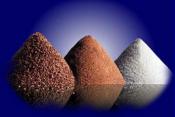Search
Login
What interventional insulation to choose for dried and wet wood
Like hundreds of years, wood still remains in our latitudes the most popular building material for the construction of private houses. Whatever new technologies are used by builders, it is much easier to make a log house from logs or beams than, for example, from brick, and only a panel house can compete in price with a wooden house, which in turn loses about reliability and heat saving. So it turns out that the log cabins are destined for a very long life in our summer cottages. And if so, then we will pay attention to such an important element in the construction of the log house as inter-crown warming.
Content
- Interventional warming
- Interventional insulation for timber
- Interventional insulation for logs
- Jute interventional heater
- Interventional insulation from tow
- Interventional moss warming video
Interventional warming
Many people believe that if the timber or logs are well adjusted to each other, then an additional laying of some insulation or insulation material is not required. However, this opinion is not true, the wood gives moisture for a very long time and the drying process can take several years, which will lead to significant deformation of the material, and where there seems to be no gaps, noticeable voids are formed that constantly have to be plugged with improvised materials, spending energy, time and money. But you just had to use a heater that is suitable for your building material during construction (sometimes it is called a sealant, but there is no fundamental difference).

Interventional insulation is selected on the basis of compliance with the following characteristics:
- safety for human and animal health
- the long service life of the insulation must retain its properties for several decades
- low thermal conductivity
- maximum density
- sufficient elasticity
- ability to absorb and transfer moisture depending on air humidity both indoors and outdoors
When choosing an interventional insulation, the price does not play a big role, since this material does not belong to ultra-expensive, but still the overall construction costs can be reduced by using an inexpensive natural insulation that meets most of the above properties, since unscrupulous sellers often offer to purchase synthetic heaters (mineral wool, various polystyrene foam) and it is better to refrain from using these materials as interventional heaters.
Interventional insulation for timber
Due to the geometric structure of the beam, which has even sides, a little insulation is used for this material. In addition, the timber is already dried wood, so deformation during drying will be minimal. Perfectly suitable jute fabric, which is cut to size and laid between two beams with an indent from the edges of 5 mm on each side.

The remaining gap is sealed with an elastic sealant. For glued beams (in which a special groove is usually made), a special insulating (sometimes using the term sealing) tape is laid exactly to the size of the groove.
The tape has a thickness of 5 mm. The use of interventional insulation for timber is necessary regardless of any conditions.
Interventional insulation for logs
During the construction of a log house, the problem of using an interventional heater for a log house is most urgent, since the logs contain more moisture than dried timber, therefore they are more prone to deformation during gradual drying.

Experts advise to lay between the logs natural natural insulation, such as moss and tow, modern science has not yet come up with anything more perfect.
Jute interventional heater

Jute is a material consisting of several types of natural fibers, mainly cellulose, containing adhesives, the main of which is lignin, a natural polymer present in plant cells that affects the stiffness of the fiber and at the same time performs the function of bonding the microfibers that make up jute. The jute also contains wax and pectin, giving the fiber flexibility and elasticity, as well as preventing it from drying out. Jute has the highest natural fiber indicator of hygroscopicity (the ability of the material to absorb and give moisture).
Interventional insulation from tow
The traditional tow compaction in log compaction contains almost the same substances as jute, the difference is only in the proportion of the components, as well as in the length of the microfibers of which the main material consists.
Therefore, experts recommend, if there is no clear idea of \u200b\u200bwhat should be used to insulate logs or beams, use a combination of jute intervening insulation and interventional insulation from tow. They wonderful complement each other.
Interventional moss warming

For centuries, builders of wooden houses used moss as a heater (not any, but only long-fiber ones, which include red moss, sphagnum and cuckoo flax), which has proved its effectiveness and efficiency.
The only difficulty is the very laborious process of interventional warming with moss, offset by the cheapness of this material. Moss also has bactericidal properties that prevent the formation of fungi.





